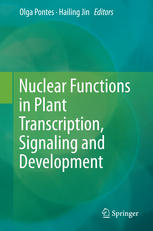

Most ebook files are in PDF format, so you can easily read them using various software such as Foxit Reader or directly on the Google Chrome browser.
Some ebook files are released by publishers in other formats such as .awz, .mobi, .epub, .fb2, etc. You may need to install specific software to read these formats on mobile/PC, such as Calibre.
Please read the tutorial at this link: https://ebookbell.com/faq
We offer FREE conversion to the popular formats you request; however, this may take some time. Therefore, right after payment, please email us, and we will try to provide the service as quickly as possible.
For some exceptional file formats or broken links (if any), please refrain from opening any disputes. Instead, email us first, and we will try to assist within a maximum of 6 hours.
EbookBell Team

4.3
18 reviewsThe genome is more than a linear code as depicted by its DNA sequences as several interacting factors play a crucial role in shaping its organization and function. The complete sequences of a number of plant genomes and the recent advances of high-throughput technologies has fueled research efforts in the field of Plant Nuclear Biology unveiling numerous insights about the mechanisms underlying genome regulation. Genomic information is being integrated into molecular- and cellular-level mechanisms of the plant processes. A host of nuclear processes underlie key developmental processes as well as biotic and abiotic interactions. Non-coding RNAs have been increasingly recognized as players in gene expression and genome defense and integrity. However, in vivo, genomes exist as elaborate physical structures, and their functional properties are strongly determined by their cellular organization. Various types of subcellular structure have been identified in the nucleus, which are associated with transcription factors, RNA processing proteins and epigenetic regulators. Interestingly, these nuclear bodies display different behaviors in response to the environment. This book compiles a series of landmark discussions of the recent advances in plant nuclear biology research focusing in the functional relevance of the arrangement of genomes and nuclear processes that impact plant physiology and development.